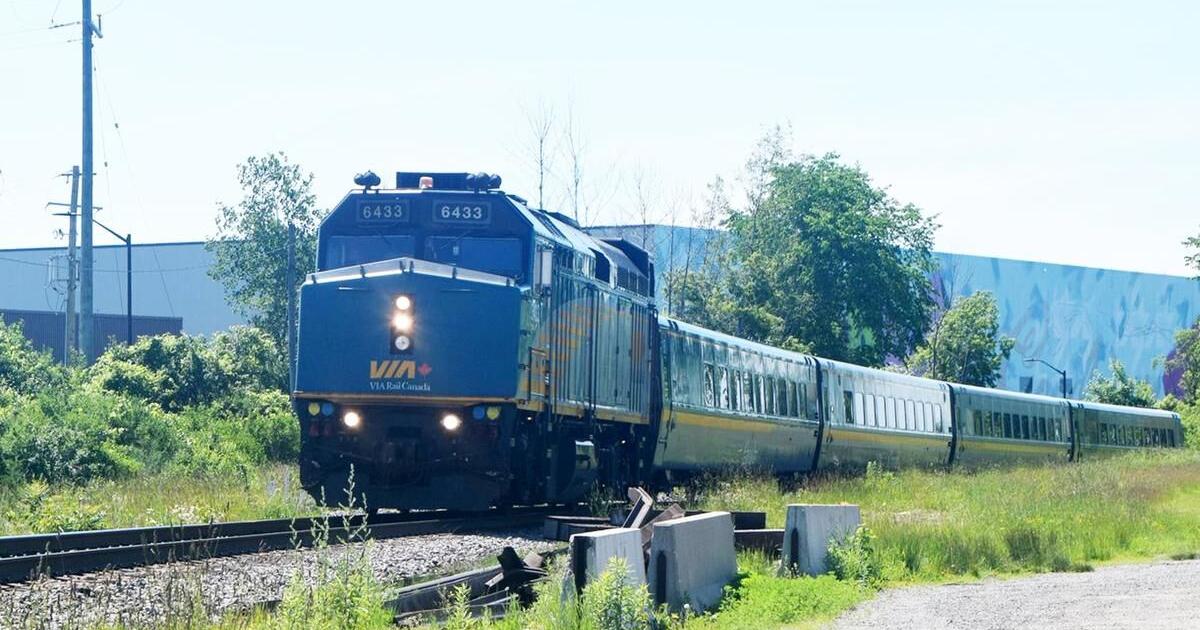Urban Sky
Senior Member
About Gormick vs. Langan

Source: Southwest Lynx Proposal (2018, p.13)
When describing above table, Greg Gormick claims that "VIA restricts the amount of information it makes public, and full costing and performance data tend to be outdated, so the most complete overview of its Southwestern Ontario operation now dates back five years", even though all but three metrics can be found in any Annual Report since 2013:

Source: VIA Rail Annual Report 2018 (p.9)
Of these three missing metrics, two can easily be calculated from other metrics provided:

Compiled from: official VIA Rail timetables
Given that the timetable only changed once since December 2012, we can quickly determine the scheduled annual train mileage for every year since 2013, as follows:

Compiled from: VIA Rail annual reports 2013-2018 and official VIA Rail timetables
To Greg Gormick's credit, the release of his Southwest Lynx report pre-dated that of VIA's 2018 Annual Report, but as I've shown above, he could have easily created the table with 2016 rather than 2013 values and then quickly update them with the figures from the 2017 Annual Report, which was published on May 7, 2018, and thus still prior to his release in "June 2018" (according to the cover page of the return; note that the file name suggests that the report was published on June 27, 2018). Nevertheless, comparing a cost-recovery rate of 66.8% a per-passenger subsidy figure of $8.85 in 1988 with respective figures of 59.5% and $32.80 in 2016 would have painted a much less alarmist picture than with figures of 41.6% and $57.79 in 2013. But I guess that it simply depends on your personal narrative whether you frame VIA's performance since the late-1980s as one of a constant decline or as one where a brutal cut effectively halved its network and service in 1990, followed first by 18 years of moderate growth, then 6 years (2008-2014) of medium decline and finally 4 years (and counting!) of strong growth (at a rate and to levels which had never been seen since at least the 1990 cuts):


Note: both diagrams were originally posted in Post #5,346
By the way, has anyone else noticed how much Greg Gormick praises the Siemens Chargers throughout his report (see quote below, taken from page 44, emphasis mine)?
I'm inclined to state that as much as they despise each other, their interests align as to that HFR must be stopped: Paul Langan opposes HFR because he (very foolishly) believes that there will be only one big rail infrastructure project which will ever receive funding and that he must make sure that it will be full-scale HSR, whereas Greg Gormick opposes HFR because he understands painfully well that VIA successfully implementing HFR would undermine his narrative that intercity passenger rail in this country is dying and thus obviate his business model, which is selling reports which outline strategies of how to save VIA. Therefore, they most probably see each other as useful idiots right now...I think Paul Langan is going to come off as even more of a kook when HFR is rolling and loads of people are using VIA. I wish guys like Greg Gormick got out in front of him with the media.
Without a doubt, Gormick is one of the most prolific railroad historians in this country, but in my personal appreciation, any of his analyses of the current situation is clouded by his cynicism and barely veiled contempt for VIA Rail. I've read the entire Southwest Lynx proposal yesterday and his incorrect narrative of a "constant decline of intercity passenger rail" is exemplified by the following table:Gormick has been pretty kooky about HFR in his own right, though nowhere close to Langan's level, and I'm someone who's read his Southwest Lynx document and totally agrees with his assessment and recommendations. I do sympathize with how jaded he seems about the provincial and federal governments though.
Source: Southwest Lynx Proposal (2018, p.13)
When describing above table, Greg Gormick claims that "VIA restricts the amount of information it makes public, and full costing and performance data tend to be outdated, so the most complete overview of its Southwestern Ontario operation now dates back five years", even though all but three metrics can be found in any Annual Report since 2013:
Source: VIA Rail Annual Report 2018 (p.9)
Of these three missing metrics, two can easily be calculated from other metrics provided:
- Passenger miles: Shortfall divided by Subsidy per Passenger mile = 135,050,000 in 2018 ($27,010,000 / $0.20), up from 114,848,000 in 2013 ($62,328,010 / $0.50)
- Cost recovery: Revenues divided by Costs = 66.9% in 2018 ($54,593,000 / $81,603,000), up from 41.6% in 2013 ($44,389,604 / $106,717,613)
Compiled from: official VIA Rail timetables
Given that the timetable only changed once since December 2012, we can quickly determine the scheduled annual train mileage for every year since 2013, as follows:
- 2013 and 2014: 1,558,863 km (29,896 km * 365 / 7)
- 2015: 1,562,144 km ( [1,558,863 * (365 - 66) + 1,577,009 * 66)] / 365)
- 2016, 2017, 2018 and 2019: 1,577,09 km (30,244 km * 365 / 7)
Compiled from: VIA Rail annual reports 2013-2018 and official VIA Rail timetables
To Greg Gormick's credit, the release of his Southwest Lynx report pre-dated that of VIA's 2018 Annual Report, but as I've shown above, he could have easily created the table with 2016 rather than 2013 values and then quickly update them with the figures from the 2017 Annual Report, which was published on May 7, 2018, and thus still prior to his release in "June 2018" (according to the cover page of the return; note that the file name suggests that the report was published on June 27, 2018). Nevertheless, comparing a cost-recovery rate of 66.8% a per-passenger subsidy figure of $8.85 in 1988 with respective figures of 59.5% and $32.80 in 2016 would have painted a much less alarmist picture than with figures of 41.6% and $57.79 in 2013. But I guess that it simply depends on your personal narrative whether you frame VIA's performance since the late-1980s as one of a constant decline or as one where a brutal cut effectively halved its network and service in 1990, followed first by 18 years of moderate growth, then 6 years (2008-2014) of medium decline and finally 4 years (and counting!) of strong growth (at a rate and to levels which had never been seen since at least the 1990 cuts):
Note: both diagrams were originally posted in Post #5,346
By the way, has anyone else noticed how much Greg Gormick praises the Siemens Chargers throughout his report (see quote below, taken from page 44, emphasis mine)?
Yet, rather than praising VIA for making what he clearly regards as a highly appropriate choice for HPR corridors like HFR or Southwest Lynx (and which he could have framed as VIA finally following his advise, even though you can safely assume that his opinion was highly irrelevant in this decision or any other decision made by VIA's management since at least when YDS took over in 2014), VIA's decision to procure its new fleet from exactly the same product line seems to have made him more bitter, cynical and even outright toxic about VIA than ever. Apparently, seeing that the solutions you have been demanding for years are finally getting implemented is a very scary development for someone who seems to have made a comfortable living off lamenting the stagnation and inaction of the past decades...Using Siemens HPR diesel-electric trainsets derived from successful European equipment modified to meet North American safety standards, the Brightline service will operate at up to 200 km/h on a frequent, evenly-spaced “clock face” schedule and connect with Amtrak passenger trains and feeder buses, the Miami and Orlando commuter rail systems, and urban transit services along its route.
The first phase of Brightline between West Palm Beach and Fort Lauderdale went into revenue service on January 13, 2018, and the extension to Miami followed on May 19. One of its greatest values in terms of advancing the case for other HPR services is through the selection of its Siemens motive power and rolling stock. This is the first off-the-shelf HPR equipment ever produced in North America.
Similar 200-km/h Charger diesel locomotives are already being used on several state-supported Amtrak routes in California, the Pacific Northwest and the Midwest. The rolling stock has also been ordered for use on the California and Midwest routes. Its immediate availability has a strong bearing on the SouthwestLynx proposal, as do the other working examples of HPR now in service or soon to be launched across the U.S.
Last edited:






